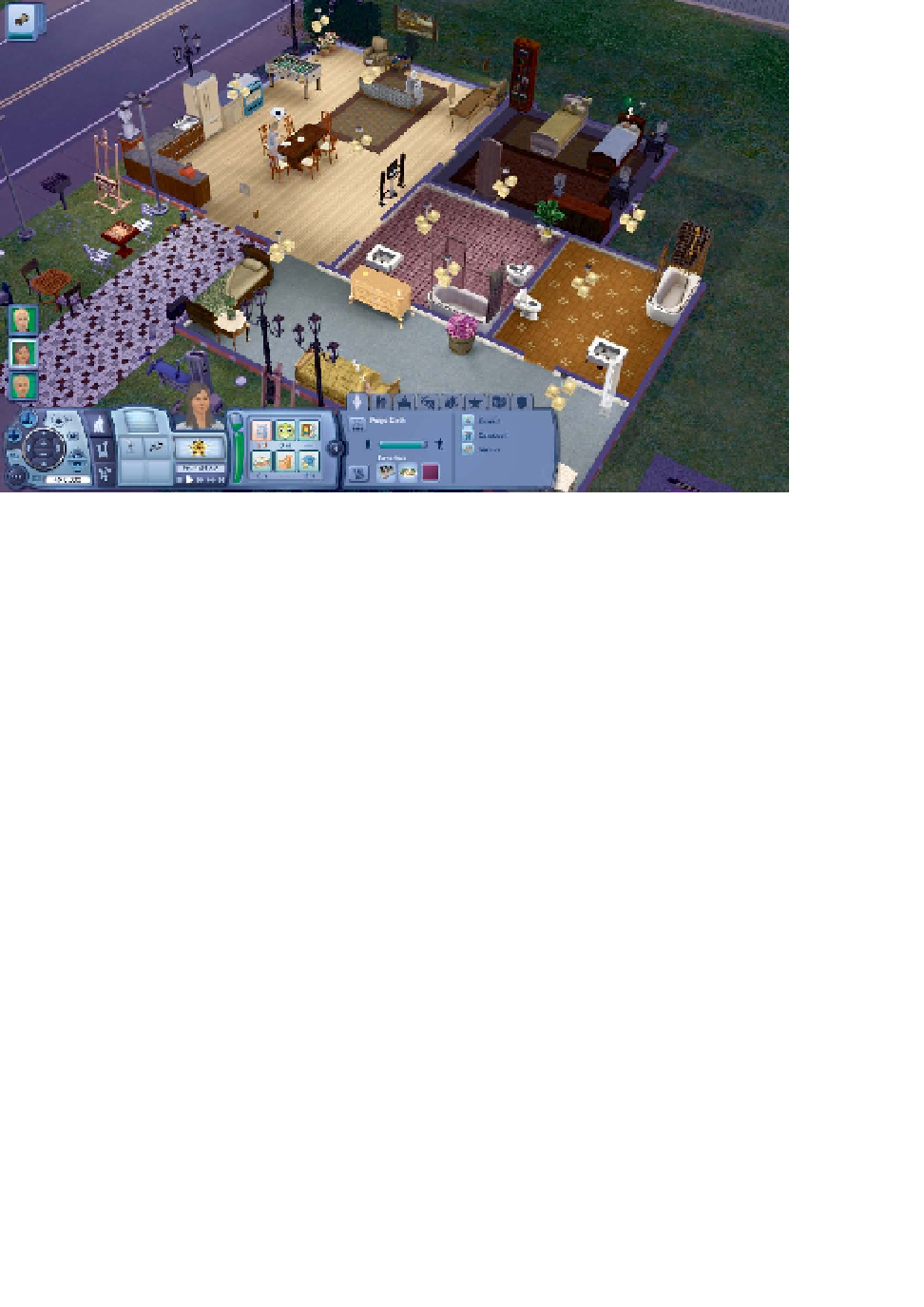Game Development Reference
In-Depth Information
FIGURe 11.21
The Sims 3
in a mode
showing the furnish-
ings and elements of
the economy in the
overlay at the bottom
emergent Progress and Gameplay Phases
One of the jobs of traditional, nonemergent level design is to create varied, well-
paced gameplay. When progress is measured by movement through space, the level
designer's ability to craft that space gives him a lot of control over this aspect of the
game. But when progress is an emergent property of the dynamic system formed by
the game mechanics, this type of direct control over the gameplay becomes impos-
sible. However, that is not to say that games with emergent progression cannot have
varied and well-paced gameplay. It only means that pacing and variation need to be
created differently.
In games of emergence, variation and pacing have to come from different phases
that the game goes through. In this case, a gameplay phase is a period of time in
which the dynamic behavior of the game follows a certain pattern. When a sig-
nificant shift in the dynamic behavior occurs, the game progresses to a new phase.
For example, in a typical real-time-strategy game, the initial phase is dominated by
resource harvesting and base building. The player quickly accumulates resources
and invests in defensive buildings and units. At a certain point, the player's behav-
ior will change: He will start building an offensive force to explore the map. During
this phase, the focus is more on capturing strategic points on the map and perhaps
on securing access to future resources. Once the player has accumulated enough
resources and has found the location of the enemy base, he will probably launch a
massive attack to try to overcome his opponent.
Figure 11.22
maps these phases to distinct patterns in the resources and production
rate of the player. The chart shows that during each phase the changes to the state
of the game follow a particular pattern that is relatively stable. During the building

